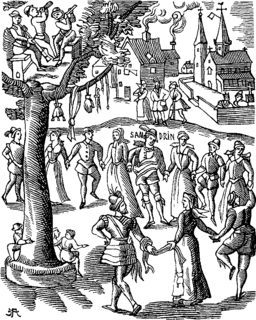
A festival is an event ordinarily celebrated by a community and centering on some characteristics aspect of that community and its religion or cultures. It is often marked as a local or national holiday, mela, or eid. A festival constitutes typical cases of glocalization, as well as the high culture-low culture interrelationship. Next to religion and folklore, a significant origin is agricultural. Food is such a vital resource that many festivals are associated with harvest time. Religious commemoration and thanksgiving for good harvests are blended in events that take place in autumn, such as Halloween in the northern hemisphere and Easter in the southern.
A religious festival is a time of special importance marked by adherents to that religion. Religious festivals are commonly celebrated on recurring cycles in a calendar year or lunar calendar. The science of religious rites and festivals is known as heortology.

Advent is a season of the liturgical year observed in most Christian denominations as a time of expectant waiting and preparation for both the celebration of the Nativity of Christ at Christmas and the return of Christ at the Second Coming. Advent is the beginning of the liturgical year in Western Christianity, and is part of the wider Christmas and holiday season.

Ferdinand Christian Baur was a German Protestant theologian and founder and leader of the (new) Tübingen School of theology. Following Hegel's theory of dialectic, Baur argued that second century Christianity represented the synthesis of two opposing theses: Jewish Christianity and Gentile Christianity. This and the rest of Baur's work had a profound impact upon higher criticism of biblical and related texts.

Divine Liturgy or Holy Liturgy is the Eucharistic service of the Byzantine Rite, developed from the Antiochene Rite of Christian liturgy which is that of the Ecumenical Patriarchate of Constantinople. As such, it is used in the Eastern Orthodox, the Greek Catholic Churches, and the Ukrainian Lutheran Church. Although the same term is sometimes applied in English to the Eucharistic service of Armenian Christians, both of the Armenian Apostolic Church and of the Armenian Catholic Church, they use in their own language a term meaning "holy offering" or "holy sacrifice". Other churches also treat "Divine Liturgy" simply as one of many names that can be used, but it is not their normal term.
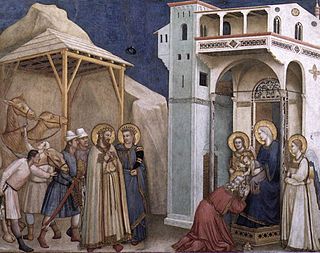
The Twelve Days of Christmas, also known as Twelvetide, is a festive Christian season celebrating the Nativity of Jesus. In some Western ecclesiastical traditions, "Christmas Day" is considered the "First Day of Christmas" and the Twelve Days are 25 December to 5 January, inclusive, with 6 January being a "thirteenth day" in some traditions and languages. However, 6 January is sometimes considered Twelfth Day/Twelfth Night with the Twelve Days "of" Christmas actually after Christmas Day from 26 December to 6 January. For many Christian denominations—for example, the Anglican Communion and Lutheran Church—the Twelve Days are identical to Christmastide, but for others, e.g. the Roman Catholic Church, Christmastide lasts longer than the Twelve Days of Christmas.
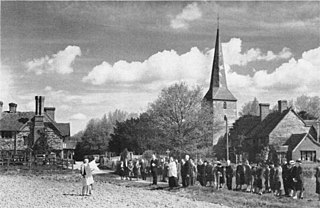
Rogation days are days of prayer and fasting in Western Christianity. They are observed with processions and the Litany of the Saints. The so-called major rogation is held on 25 April; the minor rogations are held on Monday to Wednesday preceding Ascension Thursday. The word rogation comes from the Latin verb rogare, meaning "to ask", which reflects the beseeching of God for the appeasement of his anger and for protection from calamities.
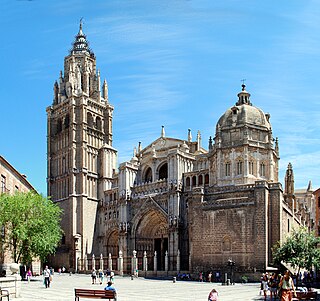
The Mozarabic Rite, officially called the Hispano-Mozarabic Rite, and in the past also called the Visigothic Rite or the Hispanic Rite, is a liturgical rite of the Latin Church once used generally in the Iberian Peninsula (Hispania), in what is now Spain and Portugal. While the liturgy is often called 'Mozarabic' after the Christian communities that lived under Muslim rulers in Al-Andalus that preserved its use, the rite itself developed before and during the Visigothic period. After experiencing a period of decline during the Reconquista, when it was superseded by the Roman Rite in the Christian states of Iberia as part of a wider programme of liturgical standardization within the Catholic Church, efforts were taken in the 16th century to revive the rite and ensure its continued presence in the city of Toledo, where it is still celebrated today. It is also celebrated on a more widespread basis throughout Spain and, by special dispensation, in other countries, though only on special occasions.
The Solemnity of Our Lord Jesus Christ, King of the Universe, commonly referred to as the Feast of Christ the King, Christ the King Sunday or Reign of Christ Sunday, is a feast in the liturgical year which emphasises the true kingship of Christ. The feast is a relatively recent addition to the liturgical calendar, instituted in 1925 by Pope Pius XI for the Roman Rite of the Catholic Church.

Joseph Hergenröther was a German Church historian and canonist, and the first Cardinal-Prefect of the Vatican Archive.
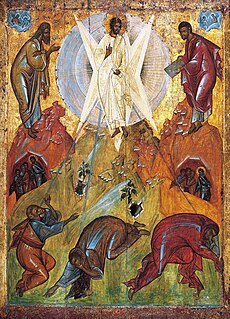
The Feast of the Transfiguration is celebrated by various Christian communities in honor of the transfiguration of Jesus. The origins of the feast are less than certain and may have derived from the dedication of three basilicas on Mount Tabor. The feast was present in various forms by the 9th century, and in the Western Church was made a universal feast on 6 August by Pope Callixtus III to commemorate the raising of the siege of Belgrade (1456).

In Christian liturgy, a vigil is, in origin, a religious service held during the night leading to a Sunday or other feastday. The Latin term vigilia, from which the word is derived meant a watch night, not necessarily in a military context, and generally reckoned as a fourth part of the night from sunset to sunrise. The four watches or vigils were of varying length in line with the seasonal variation of the length of the night.
In the history of Christianity, the African Rite refers to a now defunct Christian, Latin liturgical rite, and is considered a development or possibly a local use of the primitive Roman Rite. Centered around the Archdiocese of Carthage in the Early African church, it used the Latin language.

Candlemas, also known as the Feast of the Presentation of Jesus Christ, the Feast of the Purification of the Blessed Virgin Mary, or the Feast of the Holy Encounter, is a Christian holiday commemorating the presentation of Jesus at the Temple. It is based upon the account of the presentation of Jesus in Luke 2:22–40. In accordance with Leviticus 12, a woman was to be purified by presenting a lamb as a burnt offering, and either a young pigeon or dove as sin offering, 33 days after a boy's circumcision. It falls on 2 February, which is traditionally the 40th day of and the conclusion of the Christmas–Epiphany season. While it is customary for Christians in some countries to remove their Christmas decorations on Twelfth Night, those in other Christian countries historically remove them after Candlemas. On Candlemas, many Christians also bring their candles to their local church, where they are blessed and then used for the rest of the year; for Christians, these blessed candles serve as a symbol of Jesus Christ, who referred to himself as the Light of the World.
"Octave" has two senses in Christian liturgical usage. In the first sense, it is the eighth day after a feast, reckoning inclusively, and so always falls on the same day of the week as the feast itself. The word is derived from Latin octava (eighth), with dies (day) understood. In the second sense, the term is applied to the whole period of these eight days, during which certain major feasts came to be observed.

The central Catholic liturgy is the Holy Mass, encompassing the Liturgy of the Word and the Liturgy of the Eucharist, where the bread and wine are consecrated and become the Body and Blood of Christ. As defined by the Church at the Council of Trent, in the Mass, "the same Christ who offered himself once in a bloody manner on the altar of the cross, is present and offered in an unbloody manner". The Church describes the Mass as the "source and summit of the Christian life". Thus the Church teaches that the Mass is a sacrifice. It teaches that the sacramental bread and wine, through consecration by an ordained priest, become the sacrificial body, blood, soul, and divinity of Christ as the sacrifice on Calvary made truly present once again on the altar. The Catholic Church permits only baptised members in the state of grace to receive Christ in the Eucharist.

The Lity or Litiyá is a festive religious procession, followed by intercessions, which augments great vespers in the Eastern Orthodox and Byzantine Catholic churches on important feast days. Following a lity is another liturgical action, an artoklasia, and either of these terms may be used to describe both liturgical actions collectively.
The Ranking of liturgical days in the Roman Rite is a regulation for the liturgy of the Roman Catholic church. It determines for each liturgical day which observance has priority when liturgical dates and times coincide, which texts are used for the celebration of the Holy Mass and the Liturgy of the hours and which liturgical color is assigned to the day or celebration.
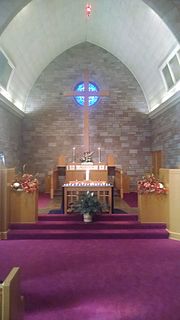
Totensonntag, also called Ewigkeitssonntag or Totenfest, is a Protestant religious holiday in Germany and Switzerland, commemorating the faithfully departed. It falls on the last Sunday before the First of the Sundays of Advent, and it is the last Sunday of the liturgical year in the German Evangelical Church and the Protestantse Kerk in The Netherlands.
Mysterii Paschalis is an apostolic letter issued motu proprio by Pope Paul VI on 14 February 1969. It reorganized the liturgical year of the Roman Rite and revised the liturgical celebrations of Jesus Christ and the saints in the General Roman Calendar. It promulgated the General Roman Calendar of 1969.












